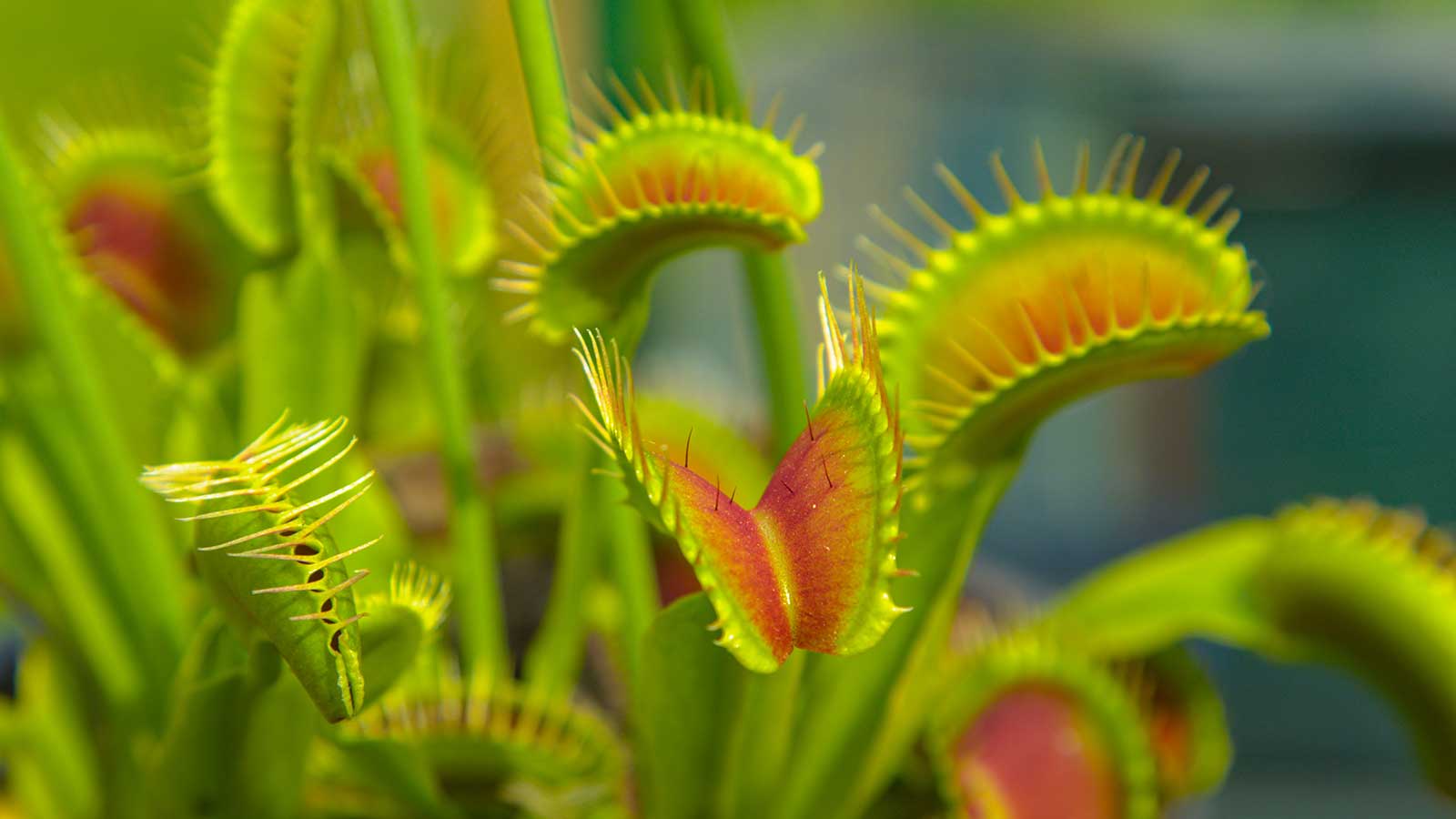
Venus flytraps – Dionaea muscipula – are well-known for their carnivorous nature, as they use their leafy traps to catch and eat insects. And while they're native to subtropical wetlands, they make fascinating houseplants, when cared for correctly.
Growing Venus flytraps can indeed be tricky. But for those who have already mastered the basics of houseplant care, they present a fun challenge. And if you already have one of these plants, it's possible to go one step further and try propagating it. That way, you can double or even triple your collection, for free.

3 methods for propagating Venus flytraps
The experts share their top tips on how to make more of these interesting indoor plants.

How to propagate Venus flytraps via division
Many established plants can be propagated by division. In the case of Venus flytraps, you'll need to separate and re-pot their offshoots. This is the quickest and easiest way to make more.
'For best success, you should try this method in the early spring to early summer months,' says houseplant expert Vladan Nikolic.
Here's how to do it:
- Take the plant out of its pot and carefully remove the soil from around the roots.
- Locate the spot where two rhizomes (thick, white, fleshy roots) connect, says Vladan.
- Pull the rhizomes apart gently, Vladan instructs, then plant each part in a separate pot. Use a planting mix of one part perlite to one part peat moss.
Perlite is available to buy from Perfect Plants Nursery.

How to propagate Venus flytraps from leaf cuttings
Like many plants, Venus flytraps can also be propagated via cuttings, and the process is relatively simple. You will need to be patient, however – 'It can take several weeks to several months to see new growth,' Vladan says.
He shares his step-by-step tips on how to do it:
- Pull off a couple of leaves from the plant. The leaves must have a white end – a piece of rhizome – attached.
- Plant the leaves in a mix of sphagnum moss (or pure, unenriched peat moss) and perlite, at a 50:50 ratio. Make sure the white end is covered with soil and the green, leafy part is left uncovered.
- Cover the pot with plastic wrap to promote high humidity.
- Keep the potting mix moist at all times and provide bright, indirect light.

How to propagate Venus flytraps from seed
You can also grow Venus flytraps from seeds. It's easiest to buy these, but you could try harvesting them from seedpods if your plant has produced them.
- Use either a seed tray or a 4in pot if you are sowing a small pinch of seeds, says gardening expert Sean Lade.
- Fill the container with pure, unenriched peat moss mixed with perlite, Vladan says. The mix should be thoroughly moist, says Sean.
- Sprinkle the seeds evenly onto the surface of the soil, Sean continues. Do not bury them, but instead, lightly press them down to ensure good seed-to-soil contact.
- Flytraps thrive in high humidity and a temperature range of 70-85°F, Sean says. Putting the seeds in a heated propagator will help with the germination process.
- They should take around four to eight weeks to germinate, Sean continues. 'When your plantlets have grown several traps and are large enough to handle, transplant them into their individual pots,' he says. 'As the young plants grow, provide them with high humidity and gradually introduce them to more direct sunlight.'
'The key here is patience,' says Tony O'Neill of Simplify Gardening. 'It takes a few years for seed-grown plants to reach maturity.'

FAQs
How much light do Venus flytraps need to propagate successfully?
Venus flytraps need bright light. 'The more light you can provide, the higher the chances of successful propagation,' says houseplant expert Vladan Nikolic. However, direct sun should be avoided, as this can damage the young plants.
What mistakes should you avoid when propagating Venus flytraps?
When watering your flytraps, it is vital to use only rainwater, distilled or demineralized water, or reverse osmosis water, says houseplant expert Vladan Nikolic. 'Don't use tap water, because it contains minerals which will slowly kill your plant.' It's also important to avoid waterlogging the soil, as this could lead to root rot.
Don't be tempted to fertilize these plants, either. 'Venus flytraps grow in nutrient-poor environments,' Vladan points out. Not only is fertilizing unnecessary, but it can also be harmful, since the extra nutrients can burn the roots and even kill the plants, he says.
Vladan also warns against using regular potting soil, as the synthetic fertilizer and mineral content can harm Venus flytraps.
Finally, avoid triggering the traps unnecessarily, advises gardening expert Tony O'Neill. 'Playing with the traps is tempting, but this can weaken the plants if done excessively.'
Fancy growing even more tropical plants in your home? Pothos, spider plants, and succulents can all be propagated in just a few steps – and as low-maintenance houseplants, they make excellent gifts.







